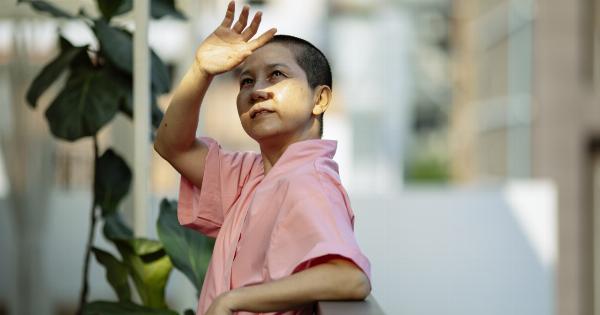Heat stroke is a serious and potentially life-threatening condition that occurs when the body overheats, usually as a result of prolonged exposure to high temperatures or physical exertion in hot and humid conditions.
It is essential to recognize the symptoms of heat stroke to take immediate action and prevent further complications.
1. What is Heat Stroke?
Heat stroke, also known as sunstroke, is a severe form of heat illness characterized by a body temperature above 104°F (40°C). It is a medical emergency that requires prompt treatment to prevent organ damage or even death.
Heat stroke affects the body’s ability to regulate its temperature, leading to an increase in body temperature and affecting multiple systems.
2. Common Symptoms of Heat Stroke
The symptoms of heat stroke can vary from mild to severe, and it is crucial to be aware of the signs to take immediate action. The common symptoms include:.
- High body temperature: The body temperature can rise rapidly in heat stroke, exceeding 104°F (40°C).
- Hot, dry skin: The skin may feel dry to the touch and hot due to lack of sweating.
- Rapid heartbeat: The heart rate may become rapid and irregular.
- Rapid and shallow breathing: Breathing may become fast and shallow.
- Throbbing headache: A severe headache is a common symptom of heat stroke.
- Dizziness and confusion: Heat stroke can cause dizziness, lightheadedness, and confusion.
- Nausea and vomiting: Feeling nauseous and vomiting are common symptoms.
- Muscle cramps and weakness: Heat stroke can lead to muscle cramps and weakness.
- Seizures: In severe cases, heat stroke can cause seizures or convulsions.
- Loss of consciousness: Heat stroke can cause loss of consciousness or even coma.
3. Who is at Risk?
While anyone can develop heat stroke if exposed to extreme heat, certain factors can increase the risk. These include:.
- High temperatures: Heat strokes are more common during heatwaves and in areas with extremely high temperatures.
- Strenuous physical activity: Engaging in intense exercise or exertion, especially in hot and humid environments, can put individuals at a higher risk.
- Age: Older adults and young children are more vulnerable to heat stroke due to a decreased ability to regulate body temperature.
- Chronic diseases: People with chronic conditions, such as heart disease, lung disease, or obesity, are more susceptible to heat stroke.
- Medications: Certain medications can affect the body’s ability to regulate temperature and increase the risk of heat stroke.
- Alcohol or drug use: Alcohol and drug consumption can impair the body’s ability to regulate temperature and increase susceptibility to heat stroke.
4. Prevention of Heat Stroke
Preventing heat stroke is crucial, especially during hot weather or when engaging in physical activities in high temperatures. Some preventive measures include:.
- Staying hydrated: Drink plenty of fluids, even if not feeling thirsty, to prevent dehydration.
- Avoiding direct sun exposure: Seek shade or use umbrellas and wear lightweight, breathable clothing.
- Limiting physical activity: Avoid intense physical exertion during peak heat hours.
- Taking breaks and cooling off: Rest in cool or air-conditioned environments and use cool towels to lower body temperature.
- Using sunscreen: Apply sunscreen with a high SPF to protect the skin from harmful sun rays.
- Monitoring medications: Consult a healthcare provider regarding any medications that may increase the risk of heat stroke.
- Keeping an eye on vulnerable individuals: Look out for older adults, young children, and individuals with chronic conditions.
5. Treatments for Heat Stroke
If someone is suspected of having heat stroke, immediate medical attention is necessary. While waiting for medical assistance, the following actions can be taken:.
- Moving to a cooler place: Get the person into shade or an air-conditioned environment.
- Removing excess clothing: Help the person remove any unnecessary clothing to allow better heat dissipation.
- Cooling the body: Use cool water or ice packs to lower the body temperature. Apply cold compresses to the neck, armpits, and groin areas.
- Providing fluids: If the person is conscious and able to swallow, provide cool water or sports drinks.
- Seeking medical help: Call emergency services or take the person to the nearest hospital for immediate medical treatment.
6. Conclusion
Understanding the symptoms of heat stroke is essential for early recognition and prompt action.
Heat stroke can have severe consequences but can be prevented by taking necessary precautions such as staying hydrated, avoiding prolonged exposure to extreme heat, and being vigilant of vulnerable individuals. Remember, prevention is always better than cure!.





























